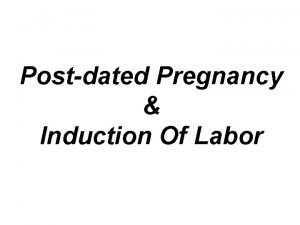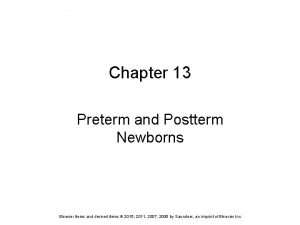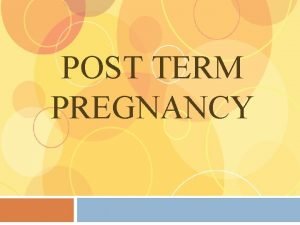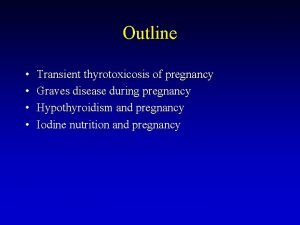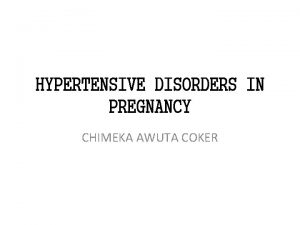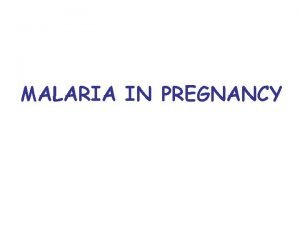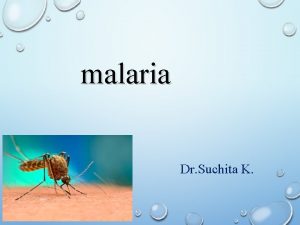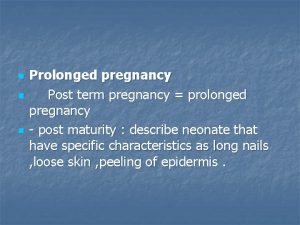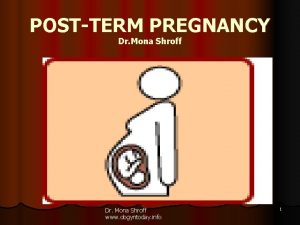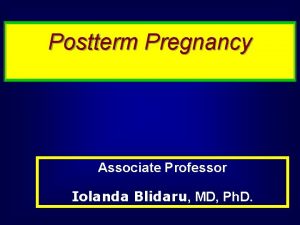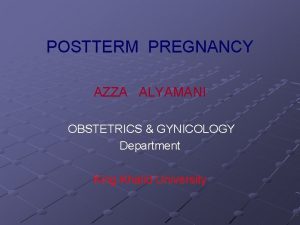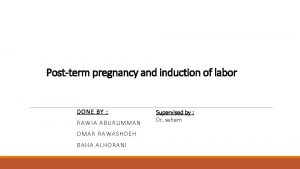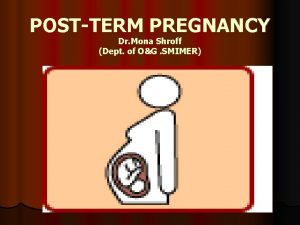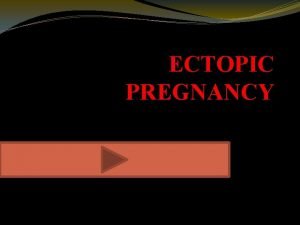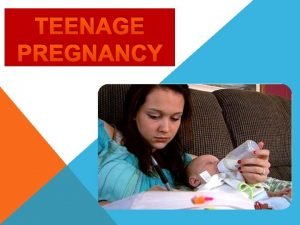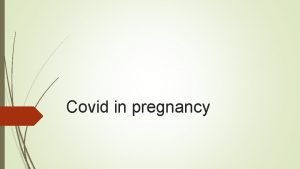Post term Pregnancy DEFINITION n n n Postterm














- Slides: 14

Post term Pregnancy

DEFINITION n n n Postterm” (also called prolonged) pregnancy refers to a pregnancy that has extended to or beyond a gestational age of 42. 0 weeks or 294 days from the first day of the last menstrual period Postmature used to describe infant with recognizable C/F indicating a pathologically prolonged pregnancy. We should avoid the term “post dates” pregnancy as it is loosely used and ill-defined

Causes of Postterm pregnancies n n By far, inaccurate dating is the most common etiology. So, get the dating correct! In the absence of inaccurate dating we do not yet understand why some pregnancies carry to 42+ gestational weeks although there is data to suggest genetics and paternity play an active role. Biological-previous prolonged preg. Decreased fetal estrogen production Placental sulfatase deficiency Anencephaly Fetal adrenal hypoplasi

Risk factor for PTP n Primiparup n Prior postterm pregnancy n n More rarely: fetal anencephaly and placental sulfatase deficiency MALE BABY

PHYSILOGICAL CHANGES ASS. WITH POSTTERM GESTATION l PLACENTAL CHANGES : ageing (increased grading on us ) infarcts , calcification AMNIOTIC FLUID CHANGES : Oligohydramnios (diminished fetal urination) presence of meconium l FETAL CHANGES : 45%-Macrosomia 10%-IU malnutrition l

Complication of PTP MATERNAL l Anxiety l Traumatic vaginal delivery-Labor dystocia l Increased CS rate l PPH risk l Assisted delivery l Endometritis l Increased risk for thromboembolic dz

Fetal adverse events 1 -Fetal distress 2 -Fetal trauma brachial plexus injuries, clavicle fracture , shoulder dystoci 3 -Increased perinatal mortality cord compression due to oligohydromias(prolonged and variable FH deceleration); Fetoplacental insufficiency 4 -Fetal growth restriction (IUGR) 5 -Macrosomic infant- risk at postterm gestation increases eight fold, approaching 10 6 -postmaturity syndrome; Triad of long, thin malnourished infant with flaking skin and meconium stained skin (20% of postterm gestations)

Mangment l Conformation of gestational age in antenatal l Antepartum intervention include elective induction of labor and antepartum fetal testing. monitoring with the goal of detecting early signs of fetal distress and preventing fetal death USG l AFI <5 oligohydramnios Macrosomia Placental grading P/V examination Assess inducibility-BISHOPS score


Post mature infant


INTRAPARTUM MANAGEMENT l Left lateral position l Continuous electronic fetal monitoring l Early ARM in active phase (hastens progress, detects meconium) l LSCS if CPD/macrosomia, fetal distress l Amnioinfusion (750 -1000 ml NS/RL) –If meconium stained liquor, variable deccelerations l Paediatrician called at delivery

Identification of patients that need delivery Ripe cervix Oligohydramnios Macrosomia Abnormal NST/BPP/CST Meconium stained liquor Unripe cx Normal fluid Normal NST/CST Normal fetal size DELIVERY Cervical assessment, NST, AFI Weekly at 40 & 41 wks Twice wkly thereafter Ripe cx Oligo Abn NST 42 WKS DELIVERY

 Causes of post term pregnancy
Causes of post term pregnancy Bishop scoring
Bishop scoring Chapter 13 preterm and postterm newborns
Chapter 13 preterm and postterm newborns Definition of spotting during pregnancy
Definition of spotting during pregnancy Post dated pregnancy complications
Post dated pregnancy complications Normal pregnancy definition
Normal pregnancy definition Awuta
Awuta Malaria in pregnancy definition
Malaria in pregnancy definition Malaria in pregnancy definition
Malaria in pregnancy definition Short term planning and long term planning
Short term planning and long term planning In my understanding
In my understanding Long term memory vs short term memory
Long term memory vs short term memory Nth term of a quadratic sequence
Nth term of a quadratic sequence Example of short term human resources
Example of short term human resources Term-to-term rule
Term-to-term rule

